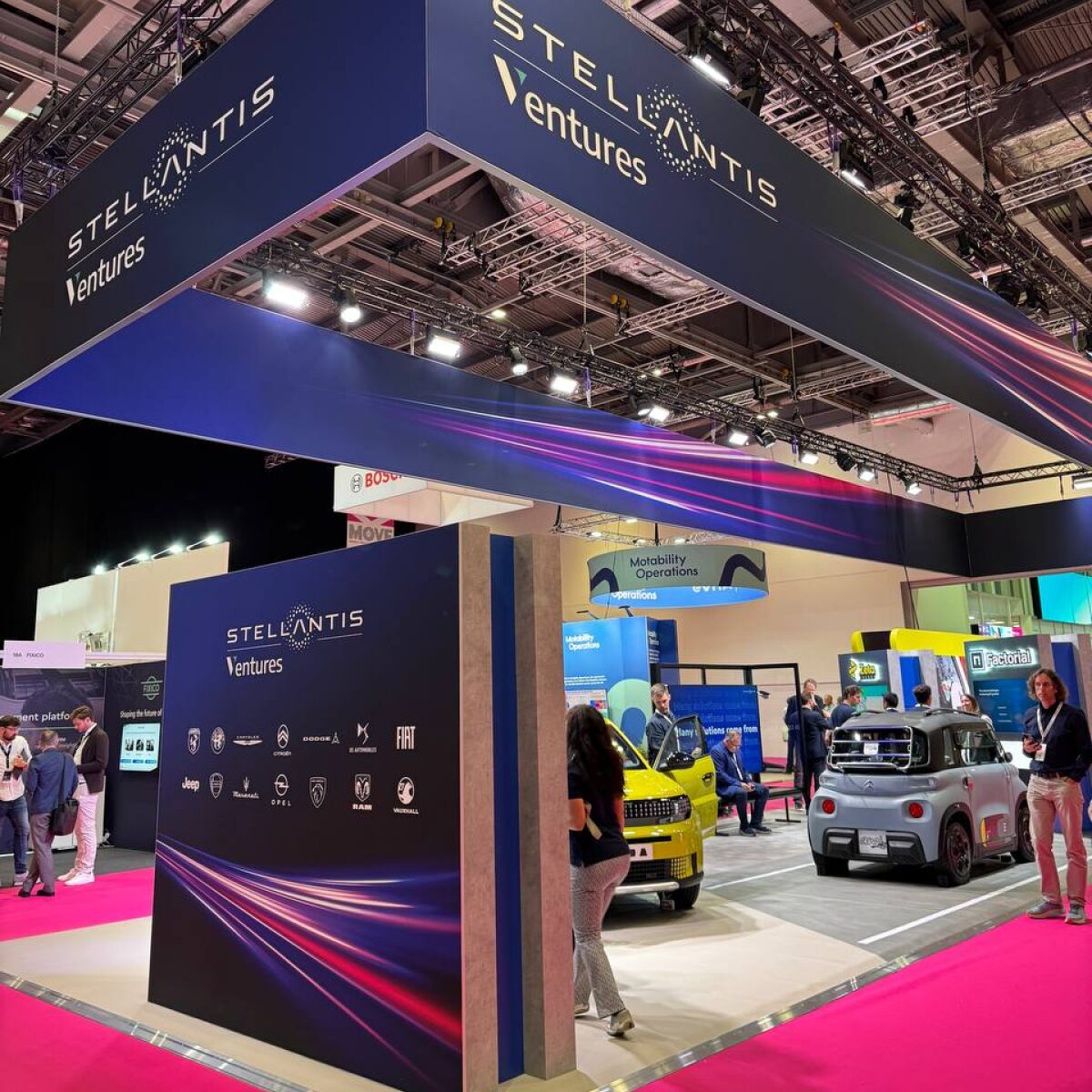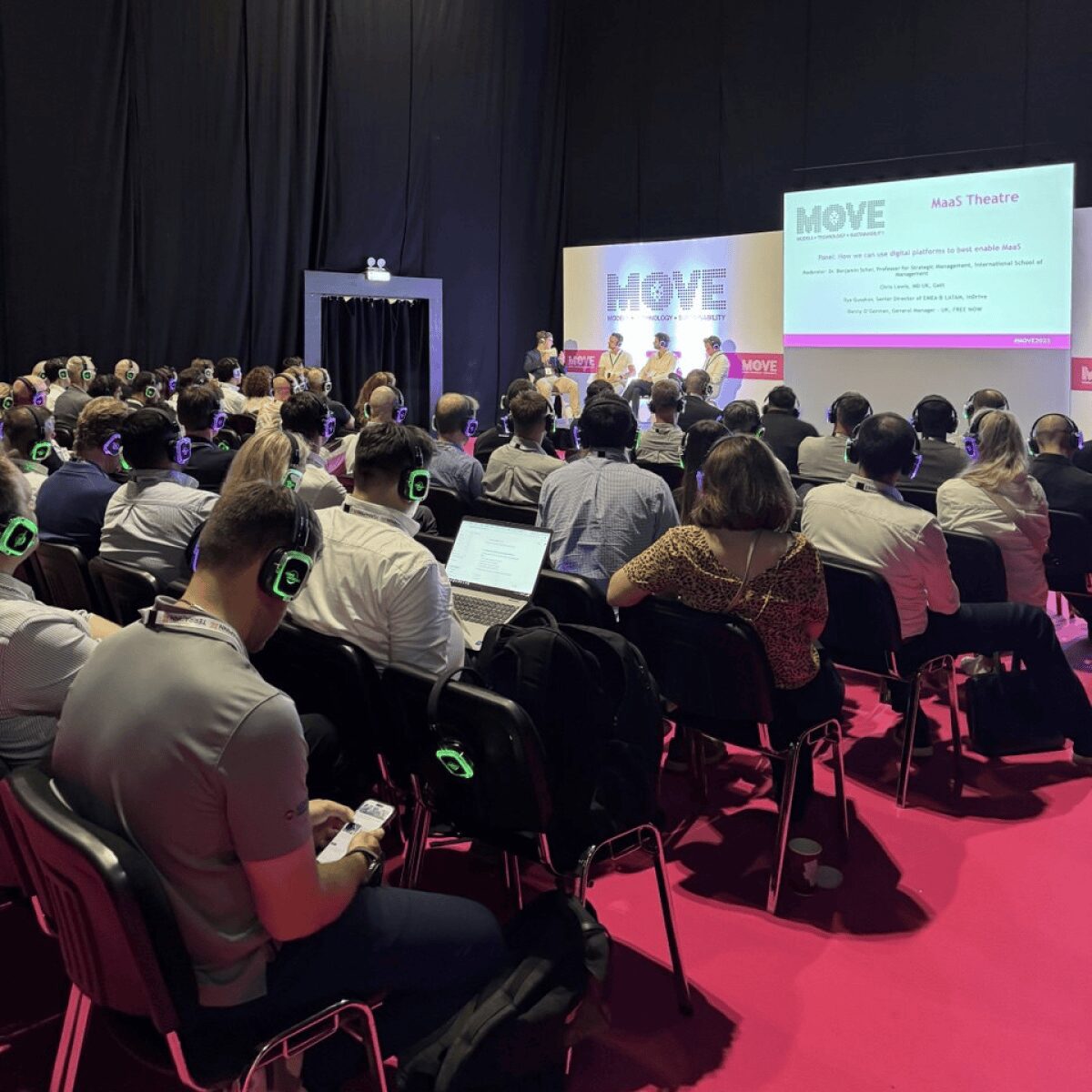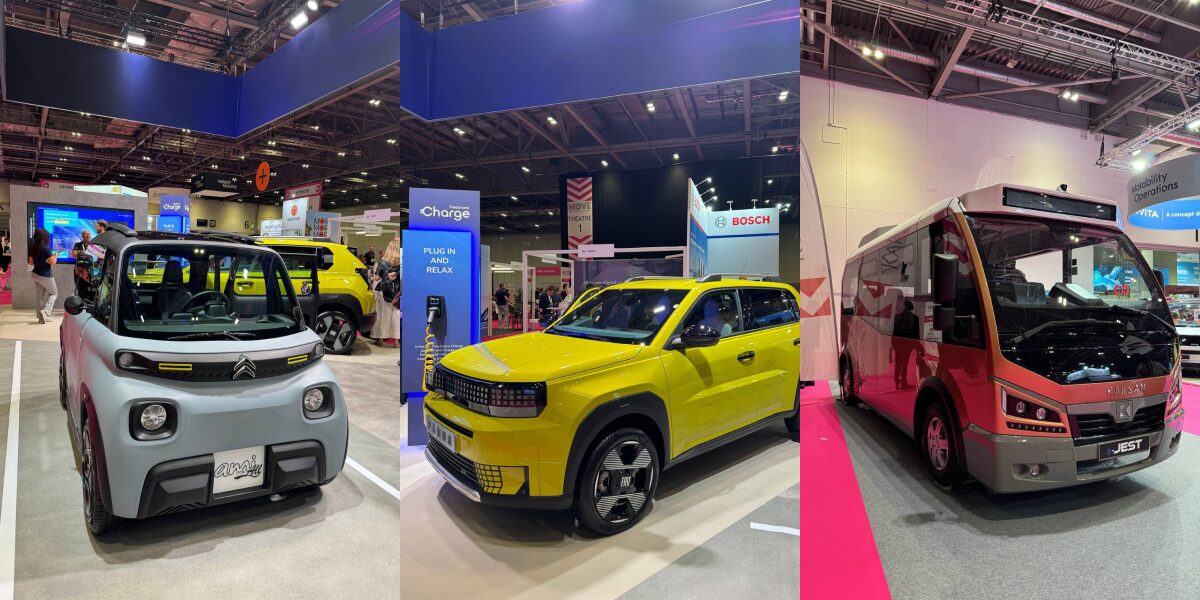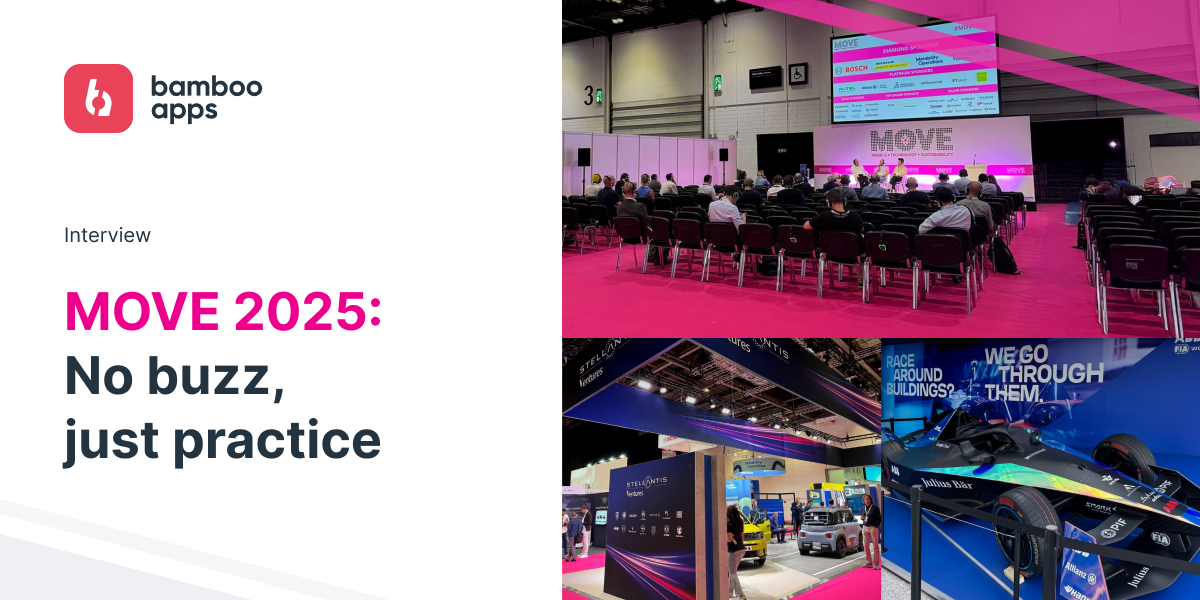MOVE 2025, one of Europe’s leading mobility events, took place on 18–19 June in London, bringing together over 4,000 key players and innovators. We spoke with Alex Antonuk, Head of Strategic Delivery & Operations at Bamboo Apps, to hear what stood out as practical, what felt overhyped, and which trends he found worth watching.
This was your first time at a mobility event in the UK. Comparing it with what you’ve seen in Germany, Sweden, and the UAE, what stood out to you about MOVE?

“It’s definitely not Dubai. The first thing that hit me – it’s small. Probably the most compact mobility event I’ve been to. But that’s not a bad thing. The whole setup felt more intimate, more focused. It was clear people came not to wander around giant booths but to talk, exchange ideas after the sessions, and find partners with proven solutions.”
That shift from spectacle to substance was evident throughout. It wasn’t about futuristic demos – most of what I saw was restrained and grounded, real products solving real‑world problems. I was pleasantly surprised by the startups in this regard: almost all of them offered solutions that already had paying customers.

So, despite its visual modesty, MOVE offered something different: insight into market‑ready technology. You don’t always need a VR tunnel or LED‑lit concept car to justify the trip. Sometimes the key value lies in simply seeing what’s already shipping and how companies approach delivery.
What was the primary focus of the event?
Hard to name one overarching theme. As I said, the event wasn’t about grand visions; it was about what’s already working and how to scale it. EV infrastructure, fleet optimisation, and the practical use of AI in mobility – these were the recurring themes. Business models were also discussed: not just tech for tech’s sake, but also how to monetise and sustain.
The main message was clear: take existing technologies and focus on smart integrations, operational efficiency, and viable revenue streams.
Were there any trends discussed at the event that surprised you?
Honestly, it didn’t seem like there was anything particularly new.
Of course, as with any event like this, there was plenty of AI on show – companies actively weaving it into both their software and hardware.
However, while some companies in the industry are chasing yet another breakthrough, I’d suggest there’s more potential in improving what already works today.

One thing I found interesting, for example, was learning more about AI in vehicle maintenance. Imagine: the user takes a photo after an accident. AI generates the insurance report, estimates the repair costs, recommends a service centre, and even selects the parts based on the vehicle’s previously registered details. The whole process can be automated.
Another example is parking systems in Europe, which are increasingly using machine learning to automate the scanning of parked cars, for instance, in Amsterdam. It’s a good practice, as it likely saves a lot of time and effort, since in Poland, for example, they’re still doing it manually.
I think solutions like that are worth further development.
But to fully answer your question, what did surprise me a bit was a conversation with a representative from Hyundai Brazil about EVs. Turns out this supposedly hot topic just isn’t getting much traction there at the moment.
What mobility players were showcasing? Were there any stands that stood out to you?

“The startup zone was probably the strongest area. Surprisingly solid products – as mentioned earlier, most of them are already on the market, not just pitch decks. “
I also noticed a strong presence across specific verticals, including fleet management tools, service management systems, EV charging and parking solutions, as well as consulting and software development firms.
Many of the “big themes,” such as connectivity, V2X, and telematics, were also present, but without hype, simply in a way that made operational sense.

Along those lines, were there representatives from cities, transport operators, or government initiatives who presented interesting cases?
Yes, there were country booths from Wales, Bavaria, and the UK – but no demos, no cases. Totally different energy from what you’d see in the UAE.
What do you think the event was missing or felt overrated? Anything that left you disappointed?
Honestly, no disappointments, just different expectations. If you come expecting immersive booths and theatrical tech, this isn’t that. But, as I said, that’s not the event’s weakness.
Let’s wrap up. What’s your key takeaway for those who couldn’t make it but are thinking about attending MOVE next year?

“It’s a grounded forum for those who are building, selling, scaling, not dreaming. This isn’t about ideas five years out but about how others are solving actual problems, who’s doing it better, and how fast you can catch up. If you’re in mobility and want to benchmark your roadmap against what’s live – or see if there’s anything you can borrow or build on – MOVE 2025 is worth your attention. Definitely.”
About Bamboo Apps
Bamboo Apps is an automotive software development company based in Tallinn, Estonia. The team builds cutting-edge solutions, specialising in HMI design, car connectivity, shared mobility, fleet management, and automotive machine learning.
With over 20 years of expertise and a strong commitment to production-grade safety standards, the company has earned a reputation as a trusted partner to OEMs and Tier 1 suppliers. Among Bamboo Apps’ clients and partners are Jaguar Land Rover, Mitsubishi Electric, Škoda Auto, Rinspeed, Osram, Gentherm, and others.


